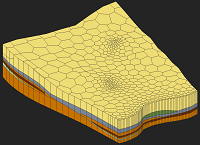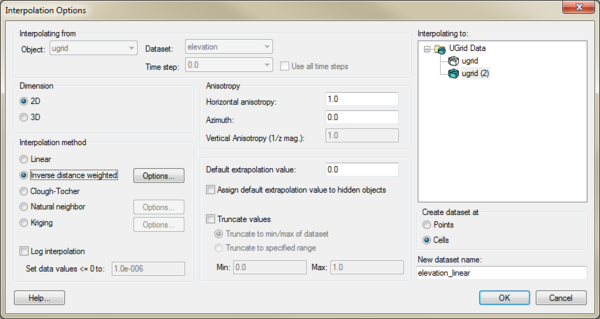GMS:UGrid Interpolation: Difference between revisions
From XMS Wiki
Jump to navigationJump to search
No edit summary |
No edit summary |
||
| Line 1: | Line 1: | ||
{{UGrid links}} | {{UGrid links}} | ||
UGrid [[GMS:Datasets|datasets]] can be interpolated to other UGrids similar to how scatter point datasets can be interpolated to other objects. The '''Interpolate To''' command is found in the right-click menu of the UGrid dataset that the user desires to interpolate to another UGrid. This command opens the following dialog: | UGrid [[GMS:Datasets|datasets]] can be interpolated to other UGrids similar to how scatter point datasets can be interpolated to other objects. The '''Interpolate To''' command is found in the right-click menu of the UGrid dataset that the user desires to interpolate to another UGrid. This command opens the following dialog: | ||
| Line 5: | Line 4: | ||
[[File:UGridInterpolation.png|thumb|600px|none]] | [[File:UGridInterpolation.png|thumb|600px|none]] | ||
This dialog allows | This dialog allows selecting the interpolation options to use, and the UGrid to interpolate to. See [[GMS:Interpolation|Interpolation]] for more information on interpolation. | ||
The user can also drag a UGrid dataset and drop it on to another UGrid to open this dialog and indicate what the interpolation target is. | The user can also drag a UGrid dataset and drop it on to another UGrid to open this dialog and indicate what the interpolation target is. | ||
| Line 11: | Line 10: | ||
==Points vs. Cells== | ==Points vs. Cells== | ||
UGrids can have datasets associated with both cells and points. Thus there is an option | UGrids can have datasets associated with both cells and points. Thus there is an option to specify where the new dataset will be located: at the points or at the cells. | ||

